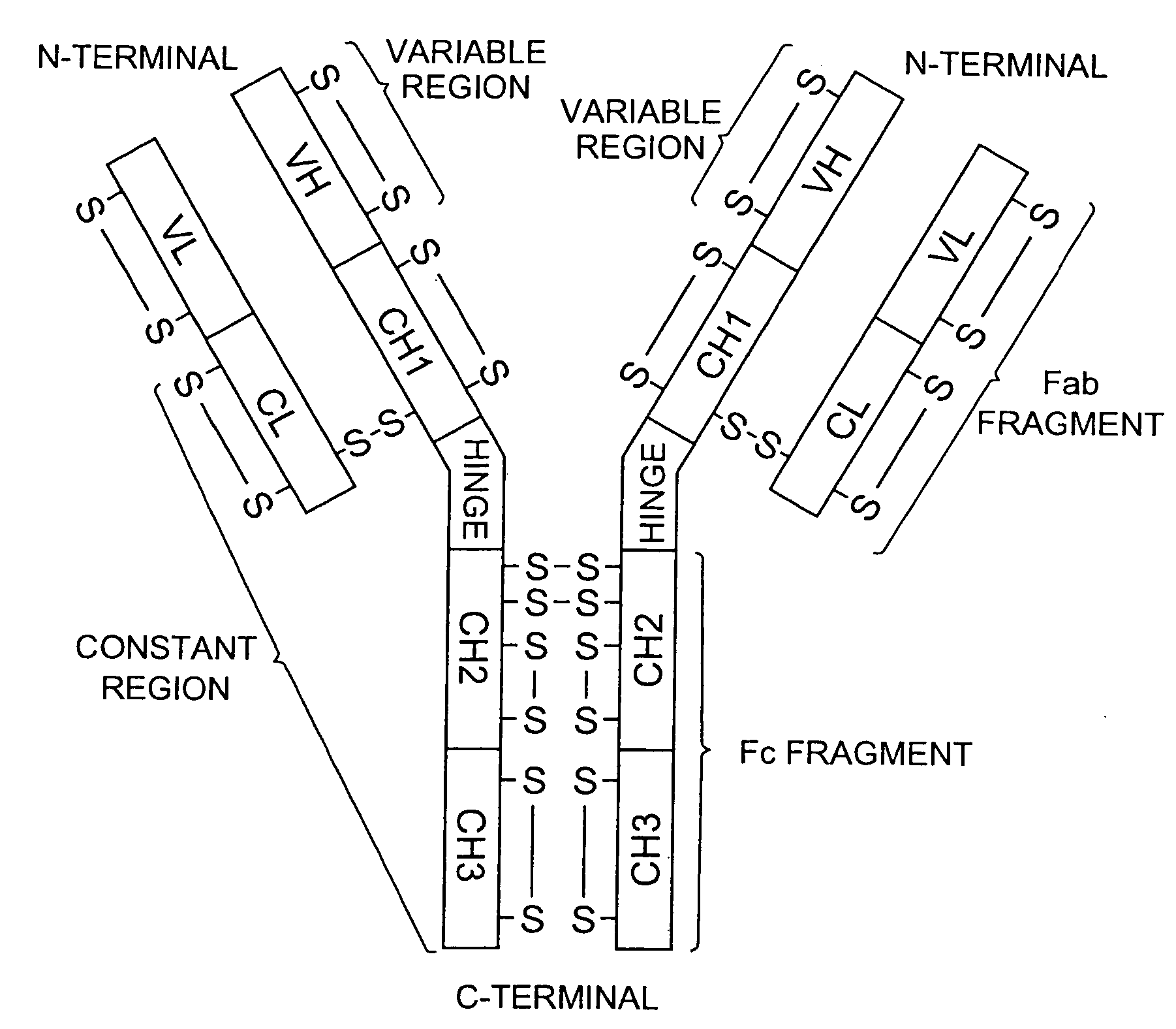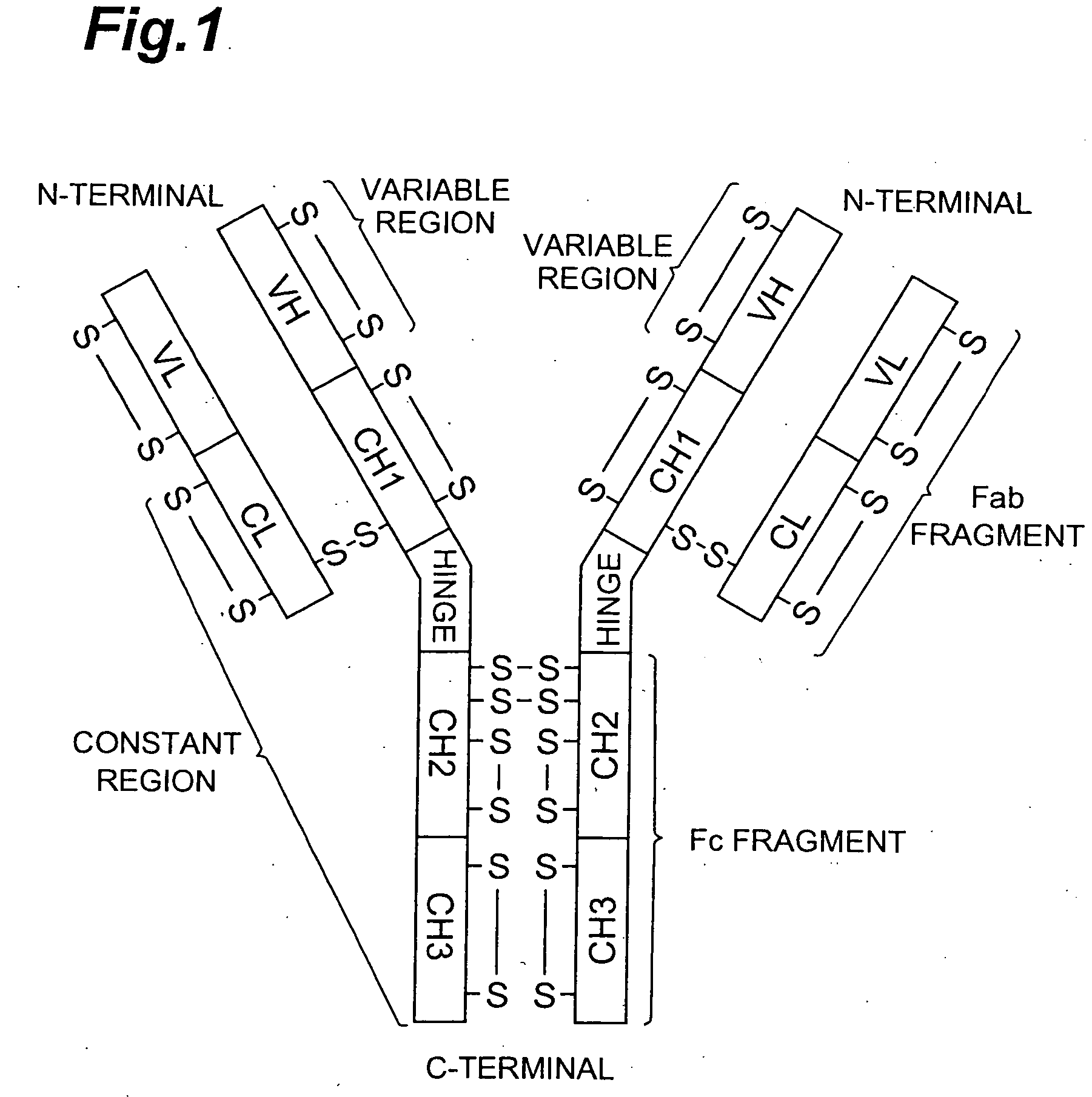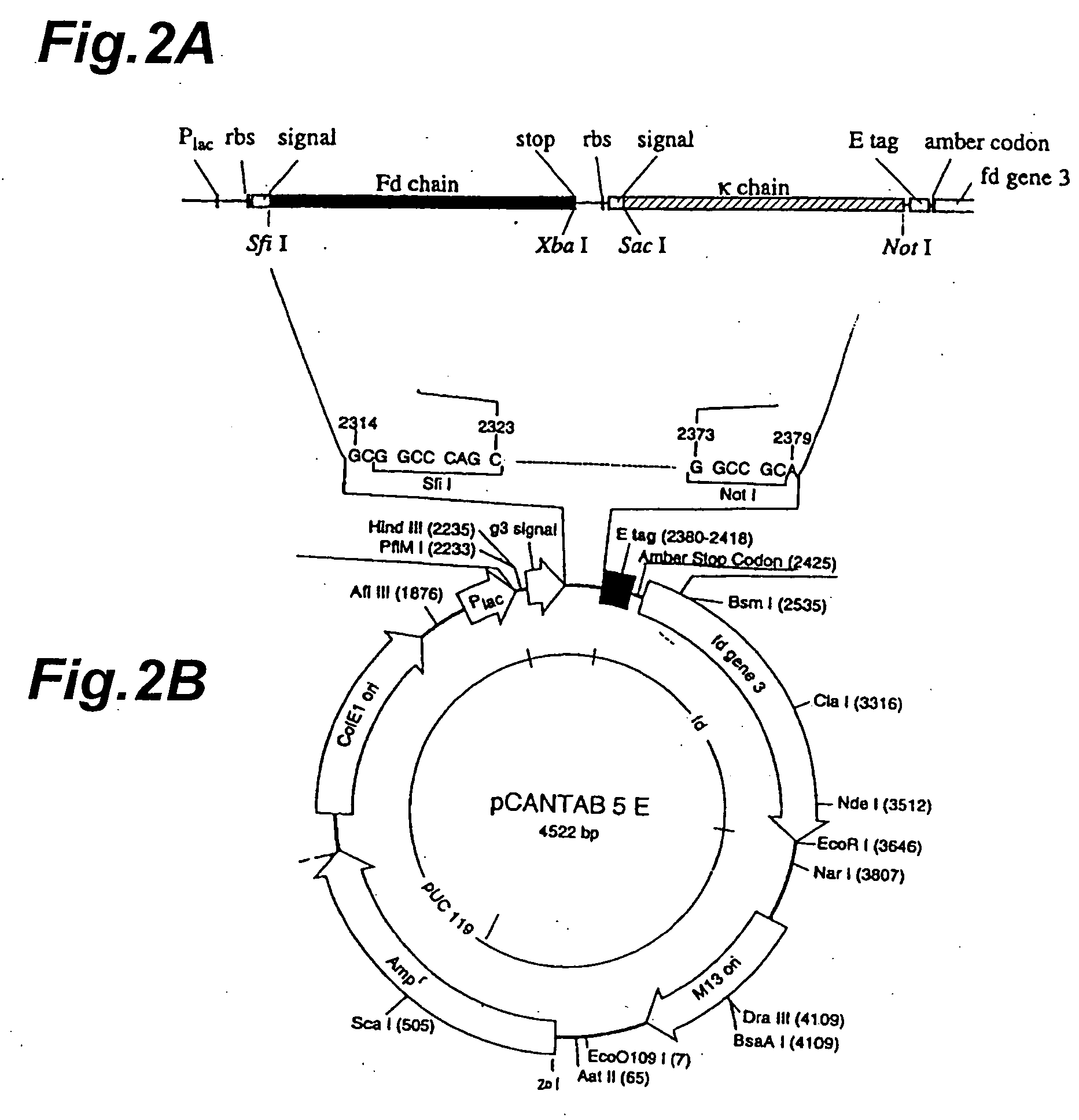Method for quantitatively detecting antigen
a quantitative detection and antigen technology, applied in the field of quantitative detection of antigens, can solve the problems of complex steps for obtaining fab′ antibodies having a uniform isoelectric point and detection cannot be performed with high accuracy, and achieve the effects of high accuracy, high accuracy, and analysis of antigens
- Summary
- Abstract
- Description
- Claims
- Application Information
AI Technical Summary
Benefits of technology
Problems solved by technology
Method used
Image
Examples
examples
[0125] The present invention will be explained in detail by way of preferred Example but is not limited thereto. In addition, in Example, unless indicated for genetic-engineering procedures, the procedures were according to Sambrook et al., Molecular Cloning: A Laboratory Manual 2nd Edition, Cold Spring Harbor Press, Cold Spring Harbor, N.Y., 1989. In addition, reagents which are not particularly indicated were purchased from Takara Shuzo or Wako Pure Chemical Industries Ltd. for use.
[0126] Abbreviations used in this Example are as follows; [0127] PCR: polymerase chain reaction (Gene amplifying method) [0128] BAP: bacterial alkaline phosphatase [0129] IPTG: isopropyl-β-D-thiogalactopyranoside [0130] PBS: phosphate buffered saline [0131] BSA: bovine serum albumin
(1) Establishment of a Hybridoma
[0132] A hybridoma producing anti-human alpha-1-anititrypsin antibody was made using human alpha-1-anititrypsin (manufactured by Carbiochem-Noviochem) as an immunization antigen according t...
PUM
| Property | Measurement | Unit |
|---|---|---|
| diameter | aaaaa | aaaaa |
| temperature | aaaaa | aaaaa |
| length | aaaaa | aaaaa |
Abstract
Description
Claims
Application Information
 Login to View More
Login to View More - R&D
- Intellectual Property
- Life Sciences
- Materials
- Tech Scout
- Unparalleled Data Quality
- Higher Quality Content
- 60% Fewer Hallucinations
Browse by: Latest US Patents, China's latest patents, Technical Efficacy Thesaurus, Application Domain, Technology Topic, Popular Technical Reports.
© 2025 PatSnap. All rights reserved.Legal|Privacy policy|Modern Slavery Act Transparency Statement|Sitemap|About US| Contact US: help@patsnap.com



